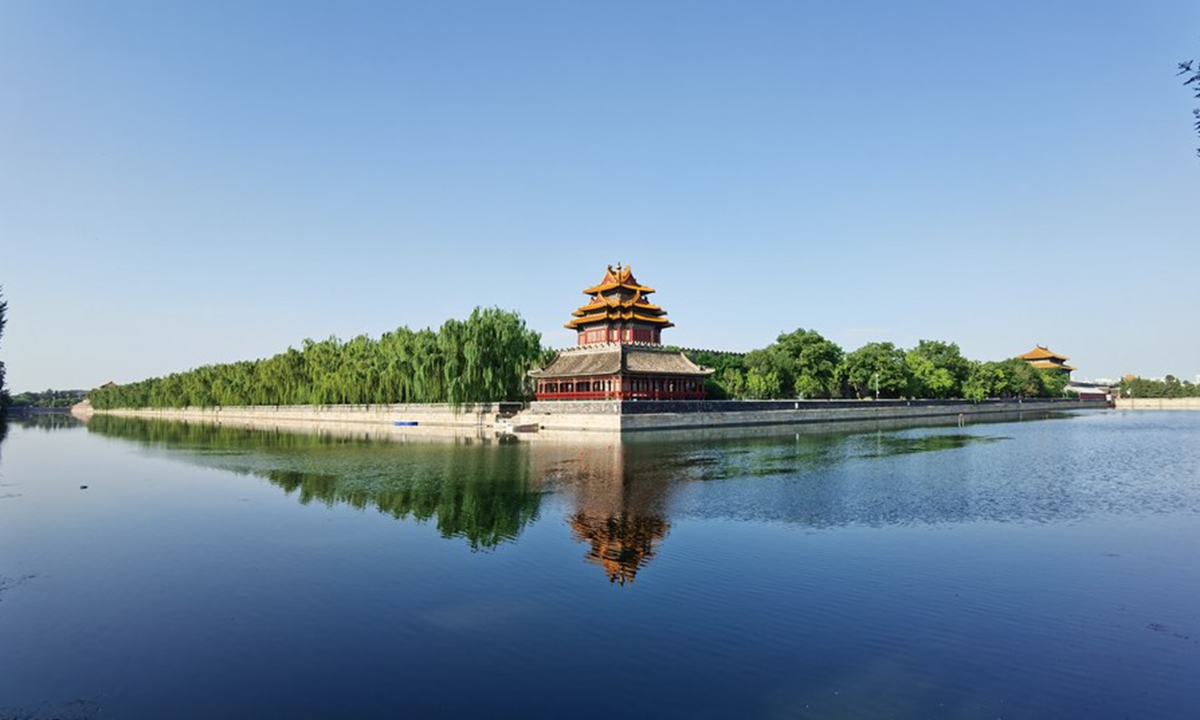
Photo taken with a mobile phone shows a turret of the Palace Museum in Beijing, capital of China, Aug. 2, 2020. (Xinhua/Xing Guangli)
Beijing reported a 53-percent decrease in PM2.5 density in the past five years, achieving the goal set for the city's 13th Five-Year Plan period (2016-2020), local authorities said on Saturday.
The city's PM2.5 density was reduced by over a half in 2020 compared to that of 2015, giving the capital city the lowest density and sharpest decline in PM2.5 within the Beijing-Tianjin-Hebei region and the nearby areas, according to data released at the ongoing fourth session of the 15th Beijing Municipal People's Congress.
The average concentration of PM2.5 in the metropolis was 38 micrograms per cubic meter in 2020, a year-on-year decline of 9.5 percent and the lowest measurement since the data was first collected in 2013.
The improved air quality marked a step closer to meeting the level-2 national standard for PM2.5 control, which is 35 micrograms per cubic meter. The PM2.5 reading is a gauge monitoring airborne particles of 2.5 microns or less in diameter, which can penetrate deep into people's lungs.
Beijing also lowered its carbon dioxide emissions per unit of GDP by over 23 percent during the same period. It plans to plant 10,000 hectares of trees in 2021 in a bid to raise the municipality's forest coverage to about 45 percent in the next five years, according to the meeting.
Authorities in Beijing have vowed to advance regional cooperation on air pollution control and further reduce the emissions of carbon dioxide and pollutants such as PM2.5, ozone, volatile organic compounds and nitrogen oxides in 2021.
